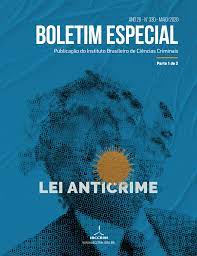The reform of the chilean criminal procedure and the guarantee judge
Views: 597Keywords:
Criminal procedure, accusatorial, adversarial, warranty judge, investigative stage, oral trialAbstract
The chilean reform of the criminal procedure was a complex structural process, designed and implemented under a broad consensus. The procedural structure is three phase accusatorial and adversarial model. In that context, the warranty judge’s role in the preliminary stages is a decisive component for the assurance of the legality of the proceedings and the effective tutelage of fundamental rights. The warranty judge enables, structurally, a differentiation between the investigative stage and the oral trial.
Downloads
Publication Facts
Reviewer profiles N/A
Author statements
- Academic society
- Instituto Brasileiro de Ciências Criminais
- Publisher
- IBCCRIM
References
El presente artículo constituye una versión renovada de un trabajo publicado por el autor en la Mentalidade inquisitória e processo penal no Brasil - Volumen 4, habida consideración de tratarse de temas y cuestiones centrales atingentes a la inminente implementación de la figura del juez de garantía en Brasil. https://chicagounbound.uchicago.edu/cgi/viewcontent.cgi?referer=
https://www.google.cl/&httpsredir=1&article=4154&context=uclrev
Mirjan R. Damaska, Las Caras de la Justicia y el Poder del Estado. Análisis comparado del proceso legal. Editorial Jurídica de Chile, año 2001, pags. 13-14.
Binder, Alberto, Introducción al Derecho Procesal Penal, Editorial Ad-Hoc, segunda edición actualizada y ampliada, Buenos Aires, 2000, pag. 59.
Julio B. J. Maier, Derecho Procesal Penal, I. Fundamentos, Editores del Puerto, 1999, pag. 740.
Ver Julio Maier, ob. cit., pags. 444-445-Luigi Ferrajoli, Derecho y Razón. Teoría del Garantismo penal. Editorial Trotta, 2001, pag. 563.
Luigi Ferrajoli, Derecho y Razón, Teoría del Garantismo Penal, Editorial Trotta, 2001, Madrid, pag. 564.
Gallardo Frías, Eduardo: “Los Jueces de Garantía y la Seguridad Ciudadana en el Contexto de la Independencia Judicial concebida como Sujeción a la Ley”, Revista Procesal Penal. Editorial Lexis Nexis, Santiago-Chile, no. 45, 2006, pag 13.
Downloads
Published
How to Cite
Issue
Section
License
Copyright of published articles belongs to the author, but with journal rights over the first publication and respecting the one-year exclusivity period. Authors may only use the same results in other publications by clearly indicating this journal as the medium of the original publication. If there is no such indication, it will be considered a situation of self-plagiarism.
Therefore, the reproduction, total or partial, of the articles published here is subject to the express mention of the origin of its publication in this journal, citing the volume and number of this publication. For legal purposes, the source of the original publication must be consigned, in addition to the DOI link for cross-reference (if any).


 Português (Brasil)
Português (Brasil)
 English
English
 Español (España)
Español (España)






